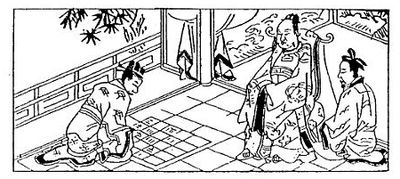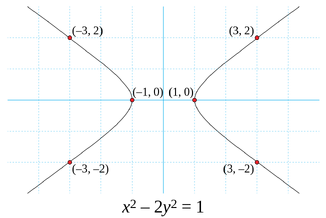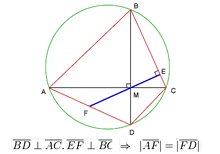Tag: Visual edit |
Tag: Visual edit |
||
| Line 9: | Line 9: | ||
'''Astronomical Theory''' |
'''Astronomical Theory''' |
||
| − | Brahmagupta opposed the ancient Vedic astronomers who argued that the Sun is closer to the Earth than the moon. |
+ | Brahmagupta opposed the ancient Vedic astronomers who argued that the Sun is closer to the Earth than the moon. He also compiled a sine table that is presented with astronomical data. |
'''Zero''' |
'''Zero''' |
||
| Line 24: | Line 24: | ||
Brahmagupta solved certain quadratic indeterminate equations of the form <math> Nx^2 + 1 = y^2 </math>, which is called Pell's equation in the West. Pell's equation was intensively studied in ancient India after Brahmagupta, and his contributions paved the road to the general solution by Bhaskara II in the 12th century AD. |
Brahmagupta solved certain quadratic indeterminate equations of the form <math> Nx^2 + 1 = y^2 </math>, which is called Pell's equation in the West. Pell's equation was intensively studied in ancient India after Brahmagupta, and his contributions paved the road to the general solution by Bhaskara II in the 12th century AD. |
||
| + | [[File:Pell.png|centre|thumb|326x326px]] |
||
| − | |||
'''Cyclic Quadrilaterals''' |
'''Cyclic Quadrilaterals''' |
||
Revision as of 07:00, 1 November 2017
Indian astronomer and mathematician.
Born: c. 598 AD in Billamala
Died: c. 670 AD in Ujjain
Discoveries
Astronomical Theory
Brahmagupta opposed the ancient Vedic astronomers who argued that the Sun is closer to the Earth than the moon. He also compiled a sine table that is presented with astronomical data.
Zero
In his magnum opus Brahmasphutasiddhanta, Brahmagupta was the first known mathematician to document on the arithmetic properties of zero as a number. The concept of zero as a number may have been known in India prior to Brahmagupta. Radiocarbon dating of the Bakhshali Manuscript (which includes the symbol for zero) has revealed that parts of the document was written in the 4th century AD, the 7th century AD, and the 10th century AD.
Approximation of Pi
Brahmagupta used two approximations of pi:
Pell's Equation
Brahmagupta solved certain quadratic indeterminate equations of the form , which is called Pell's equation in the West. Pell's equation was intensively studied in ancient India after Brahmagupta, and his contributions paved the road to the general solution by Bhaskara II in the 12th century AD.
Cyclic Quadrilaterals
Brahmagupta was famous for his studies on cyclic quadrilaterals. He discovered the formula for computing the area of a cyclic quadrilateral with sides
where is the semi-perimeter.
He also discovered the property of orthodiagonal cyclic quadrilaterals, which is called the Brahmagupta theorem.










